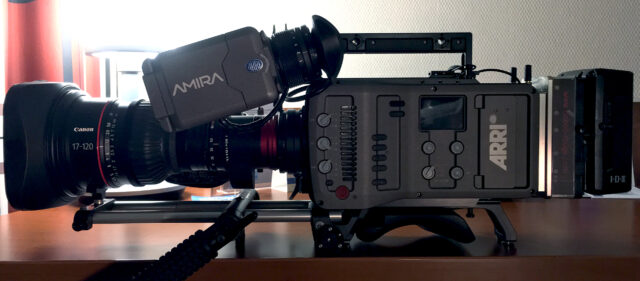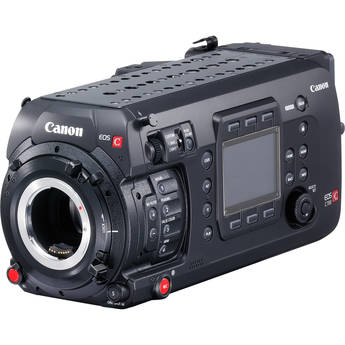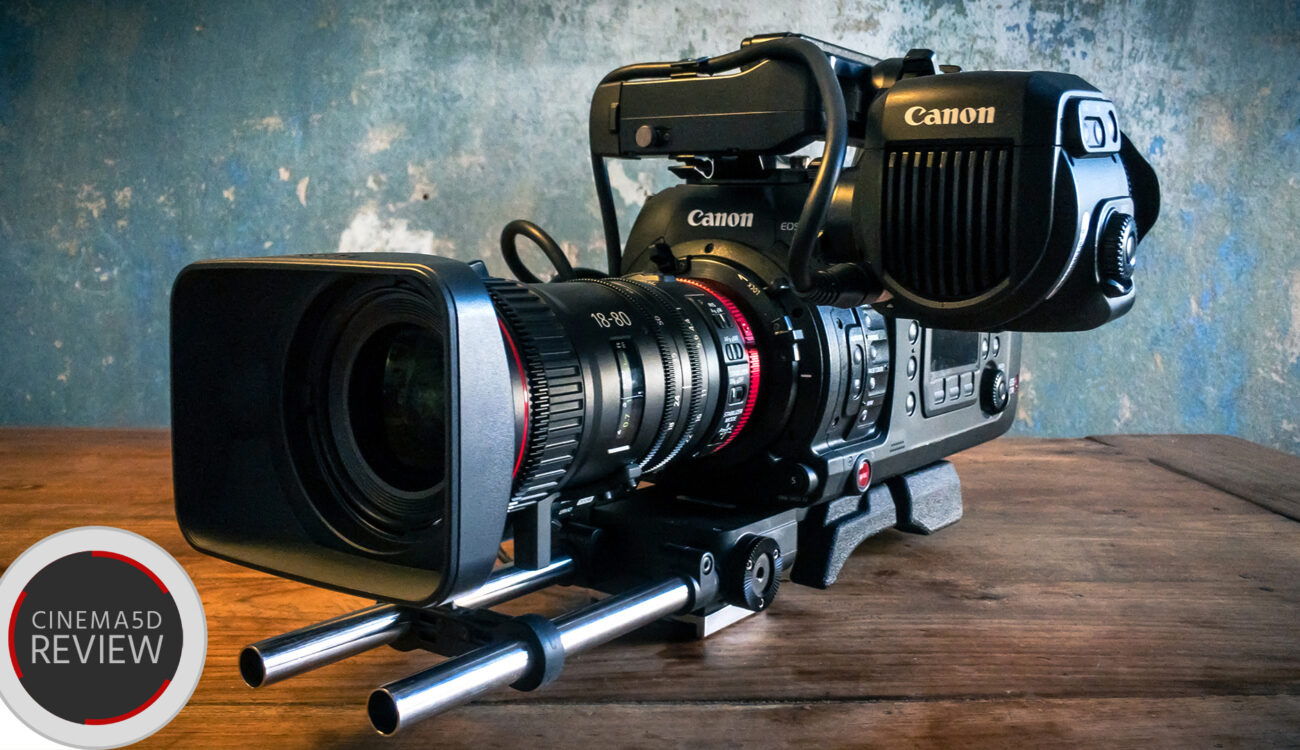
I recently had the chance to shoot a project on Canon’s flagship cinema camera: the EOS C700. My own C300 mark II was used as the B camera, and what a perfect match these two are! Read on for a full rundown of my thoughts about this camera.
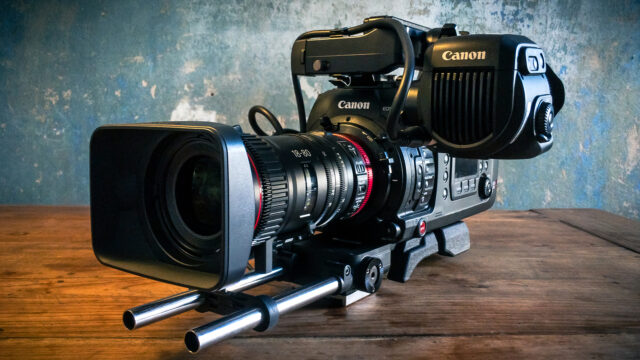
I think a short summary of Canon’s EOS cinema lineup is necessary to classify the EOS C700 camera:
The world of Canon is a little different than that of other manufacturers. The first true video camera of the cinema EOS line was the C300 back in late 2011. A few months later, in early 2012, the C500 came to market. After this upgrade, a new entry-level variant followed: the C100. Two years later, in 2014, the C100 Mark II was introduced and another 12 months later, in 2015, the C300 Mark II took the place of the original cinema EOS C300 camera.
The upgrade path chosen by Canon is not always obvious – it’s a little up and down and up again. Most other manufacturers tend to start with their flagship model and introduce a lower model after the dust has settled. Canon, however, keeps surprising with its philosophy.
Surprisingly, again, Canon skipped a possible C500 Mark II and instead unveiled the subject of this review, the EOS C700, in 2016. To complete the picture of confusion here, a new member to the cinema EOS family was introduced in 2017: the C200.
However, after all these upgrades, downgrades and crossgrades, one fact remains: The EOS C700 is Canon’s current flagship cinema camera. That’s why I wanted to take a closer look at what’s possible with cinema EOS cameras as matters stand.
Canon Germany was very kind to send me a free loaner package including the EOS C700 itself, a Canon CN-E18-80mm T4.4 L cine zoom, the EVF-V70 OLED viewfinder and Canon’s own shoulder mounting set. There was no payment involved whatsoever. Unfortunately, I can’t really share any actual footage of the project I shot (a studio production for Comedy Central) since it hasn’t been broadcasted yet.
The Canon EOS C700
The EOS C700 itself is a cuboid of 16.7 x 15.4 x 32.7 cm and weighs 3.4kg. That’s not bad at all! When fully rigged it gets heavier, obviously, but the form factor allows it to sit on your shoulder without having to modify it completely. My own C300 Mark II tells a different story here. Without excessive use of accessories, you can’t really use it as a shoulder mounted camera.
Still, the C700 is quite a big camera and I’d love it to be a little shorter and lighter than it actually is. The closest competitor to the C700 might be the ARRI Amira, which is actually super heavy in comparison. The camera alone weighs 4.1 kg, but fully rigged it is a torture to work with on the shoulder over a long period of time. But maybe that’s just me.
The camera body’s top and bottom consits of a full-sized cheese plate with tons of 1/4″ and 3/8″ threads. This makes the camera super flexible when it comes to rigging it up for a specific shoot.
There is a choice of EF or PL mount when purchasing this camera. The model I got from Canon came with a positive lock active EF mount which is really good indeed. There’s no play whatsoever and the mount holds the lens very tight. Plus, you don’t have to rotate the lens when attaching it to the C700 since the mount itself rotates.
If you’re in the market for a reliable broadcast camera with advanced color-science and dynamic range, the optional B4 lens adapter might be an option. This lets you attach standard 2/3″ ENG lenses to the EOS C700, although I haven’t tried this myself.
Audio and Connectivity
In terms of connectivity, the EOS C700 offers everything you’ll ever need. Four SDI outputs, two additional monitor outs (again: SDI), a dedicated proprietary connector for the Canon EVF-V70 OLED viewfinder. Each and every output can be configured to your specific needs. Viewfinder overlays, LUTs, magnifying, focus assists, it’s all there (or not, whatever suits your workflow best).
A fully-fledged audio section with everything you need in one place. The XLR inputs, the headphone out, TC in and the mic-line switches are located next to each other, whereas with a lot of other cameras you have to bend audio cables across the whole body of the camera because the connectors are all over the place. Scratch audio can be recorded to track 3/4 via an internal mic. That’s not for broadcast quality, of course, but having a reference track for syncing up external audio to your footage is super helpful.
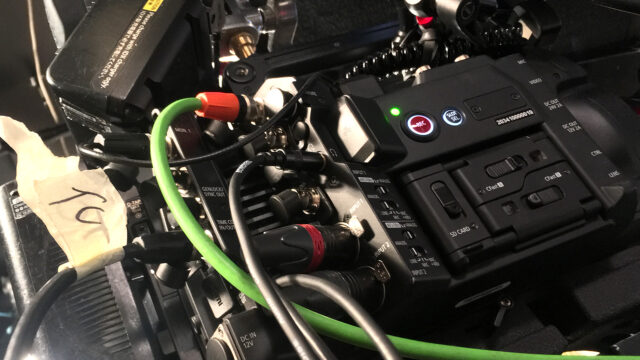
In general, Canon really has put a lot of emphasis on detail. The air intakes and exhausts are both located on the other side of the camera. The air intake of my C300 Mark II is located right next to my ear when I am shooting with the camera sitting on my shoulder. No big deal, but still annoying to have a humming fan next to your ear.
Recording
Standard CFast 2.0 cards are the recording media of choice for the EOS C700. No need for proprietary SxS or XQD cards here. A 128GB card is good for about 110 minutes worth of 1080p25 Rec.709 footage at 160Mbit/s or about 50min worth of 4K footage at 340Mbit/s. If you have a SD card handy, you can simultaneously record proxy files to it at 50Mbit/s LongGOP. One thing to remember: slow/fast motion clips won’t be recorded as proxy files onto a SD card.
For my shoot I exclusively used CFast 2.0 cards for recording 10bit 4:2:2 in XF-AVC. Although the EOS C700 is capable of recording 4K RAW externally using a dedicated CODEX recorder, the fast turnaround of my project didn’t allow for this workflow.
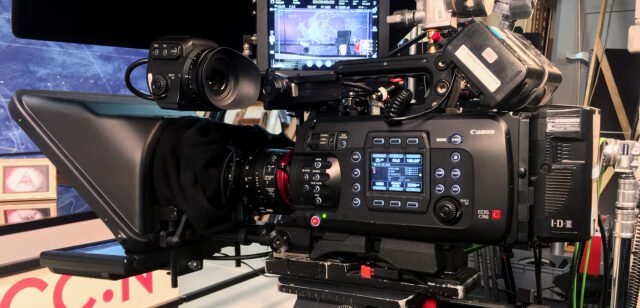
Apart from Canon’s C-log 1 and 2 you can also choose the best-of-both-worlds logarithmic gamma, the C-log 3 curve. For me, the Canon color-science is still to be beaten by Sony and others. The image coming from this C700 is very pleasing out of the box, especially the skin tones look superb.
Auto Focus and Focus Assist Features
The dual pixel CMOS AF (with compatible EF lenses) is quite outstanding and easily the most innovative feature in Canon cameras these days. This feature alone saved my day more than once on my shoot. A daily routine was to perform a tracking shot from wide angle to close-up of the talent. Since the budget did not allow for a dedicated focus puller, I had to rely on the dual pixel auto focus of the EOS C700 in conjunction with the Canon CN-E18-80mm T4.4 L cine zoom. And I could rely on it, indeed!
One day the director wanted to do a dollyzoom (ie. Vertigo). No sweat – we nailed it after just a couple of takes and I didn’t even have to worry about focusing. Not once. To be fair, the setup really was predestined for the dual pixel AF to work flawlessly. We just had a single actor in frame and only controlled camera movements. But still, I didn’t believe it to work that good until it did.
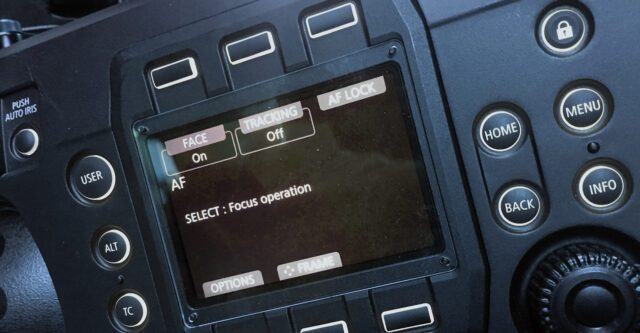
For the few takes we did handheld, I switched the camera over to focus guide. In that mode you’ll need to manually focus on your subject, but the system will tell you if you’re off and – more importantly – if your focus is set too far away or too close. That way, you’ll know instantly in which direction you have to go. Very neat!
The Menu System
The EOS C700 features a familiar-looking interface screen on the operator’s side of the camera. The screen, surrounded by 6 buttons, is for accessing the menu structure only, so no video output to be found here. Dedicated menus for recording, TC, AF, network (browser remote, IP streaming) and audio settings make it really simple to navigate through the control center of the C700. A custom page with six user assignable functions (via screen) can be configured to your liking.
The camera also sports a key lock button which is super helpful once you’re happy with your settings. You can define whether all buttons are locked or all but the record button. All the buttons on the camera are backlit so you can navigate through them easily in dark (studio) environments.
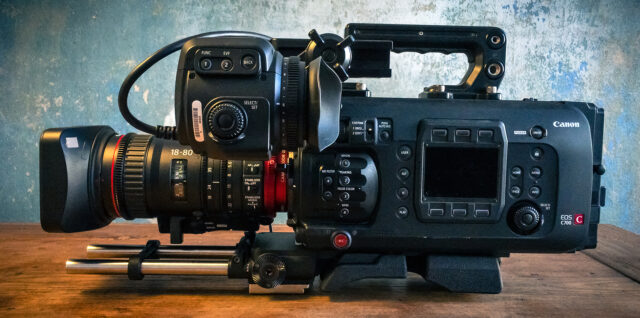
Another benefit of this menu structure is that the dedicated menu screen prevents the VF (or external monitor) from being obstructed by the menu overlay. Again, super helpful if you’re working with an assistant or sound engineer. He/she can tweak the settings while the operator can focus on framing.
ND Filters and Hardware Accessories
Just like the C300 Mark II the C700 has mechanical ND filters built-in. They come in two layers which enables two modes of operation. In normal mode you can flick through 4 filters: clear, 2 stops of light reduction, 4 stops and 6 stops. In expanded mode these filters get stacked, resulting in two additional steps: 8 stops and even 10 stops of light reduction. Every time the number of ND filters in front of the sensor changes from one to two the camera will warn you to check focus due to the added piece of glass.
As an optional accessory, you can purchase a detachable remote panel. It can be mounted on the assistant’s side of the camera and mirrors all of the camera controls. Or, using a cable, it can be used ‘remotely’.
Using accessories with the EOS C700 is a breeze. Multiple 12V and 24V power outlets can be used to power all your external monitors, FIZ controllers, wireless video transmitters etc. through the camera.
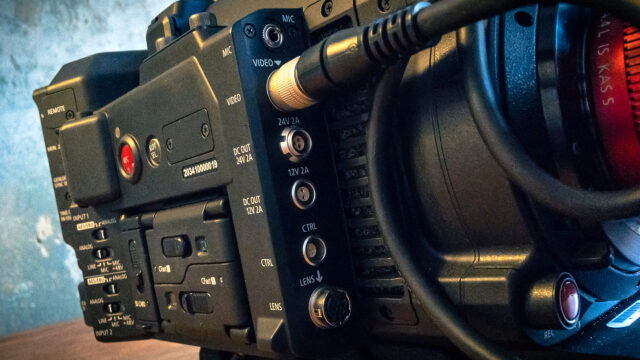
The Canon EVF-V70 OLED viewfinder, which I had the chance to check out, is a pretty nice and feature-packed EVF. However, one thing bugged me a little bit: you have to press it firmly against your eye and look straight at it, otherwise the image will look distorted immediately. That’s a thing with a lot of EVFs, actually. For my own C300 Mark II, my EVF of choice is the Zacuto Gratical Eye. That one is a little more forgiving in terms of viewing angle. Plus, I like the 4:3 aspect ratio which allows all the overlays to be placed underneath the clean 16:9 image of the camera.
The EVF-V70 offers a dedicated dial for fast access to the menu system and a bunch of assignable buttons, which is nice. For my job, I ended up using my 7″ Blackmagic Design Video Assist monitor since the camera was moving back and forth on the dolly all the time.
A Few Downsides
There’s no such thing as the perfect camera, I guess. So here are some quirks I encountered, in no particular order.
When using the auto focus system, you can’t use the magnify function. I think this is due to the way the dual pixel autofocus works, but I would like to use the magnify function every now and then, just to be sure.
While I was working with the camera I noticed a pretty high power draw from it. Maybe the batteries from my rental house were a little worn out already, but a 98Wh IDX battery only lasted for approx. 45min. I think a camera like the C700 requires at least 150wh batteries, but again, the batteries I had were on duty for quite some time already.
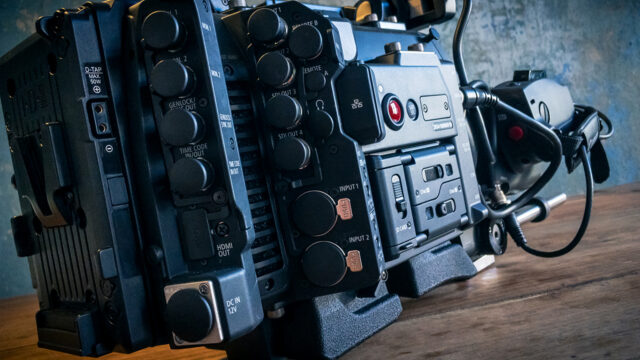
The included accessories by Canon can’t keep up with solutions by other manufacturers. The only decent piece of that kit is the handle which is really sturdy and sports lots of mounting holes. But the EVF mount? It looks a little bit like something from Home Depot. And you’ll need an Allen key if you want to remove the 15mm rods from the baseplate. I really think it’s worth getting a decent kit from ARRI, Wooden Camera or any other manufacturer.
As I said before, the camera could be a little smaller and a little bit less heavy to be perfect (for me, at least). And then there’s the price, of course. In comparison to the C300 Mark II, I think it is too expensive. It is a great camera, but with a price tag of almost $30.000 for only the body, the C700 can’t be regarded as a mainstream camera.
Conclusion
The Canon EOS C700 is a very decent piece of equipment. The build quality is superb, as is the image quality. The ability to connect almost everything to it is a real advantage over many other cameras. Its triple Digic DV 5 image processor lets you choose exactly what’s going on with each of the SDI outputs. And, after all, I had zero issues with this camera while shooting for 10 straight days. It just works.

Would I buy one? No. I’m happy with my C300 Mark II, and spending roughly $40.000 on a ready-to-shoot C700 is way above my budget. I think it’s a rental item and it’s a lovely addition to my own camera. Both cameras match perfectly and the image coming out of these is just beautiful.
While Sony keeps pushing to add great features to their cameras, it’s not all about specs – at least not to me. Picture quality is my main priority and, to me, Canon still wins over Sony. The C700 might lack that one killer feature such as 200fps super slo-mo or something else, but in the end it is a rock solid movie-making machine that produces lovely imagery and is built like a tank.
Links: Canon
Did you ever had the chance to play with a EOS C700? Waht do think of it? Let us know in the comments below!

